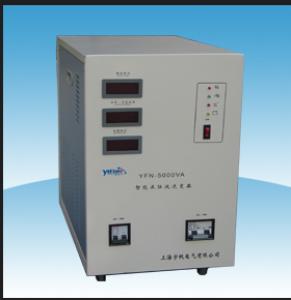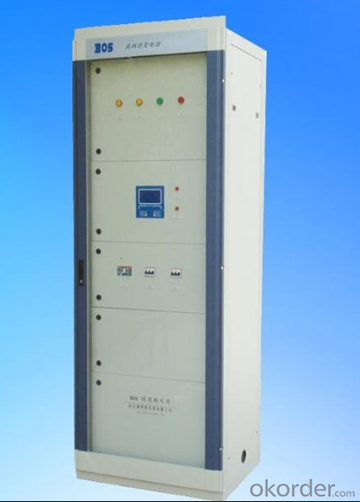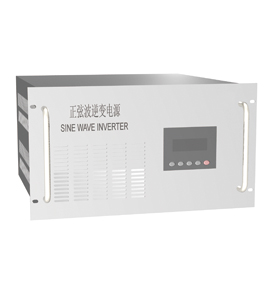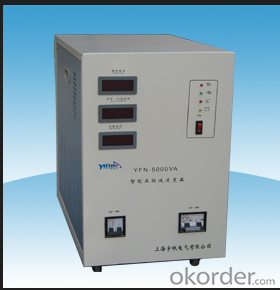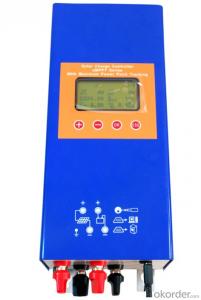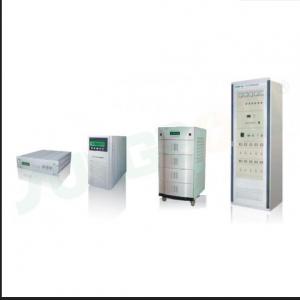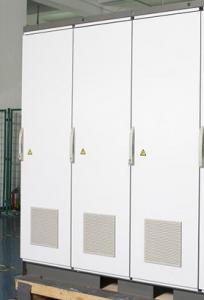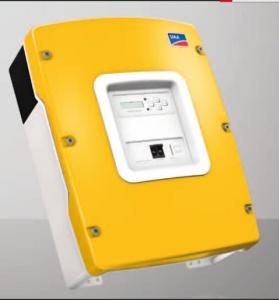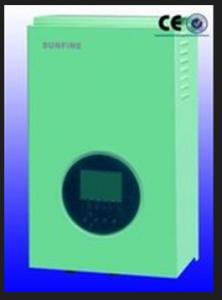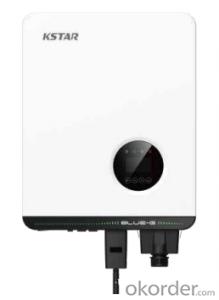Solar Irrigation Controllers PV Off-Grid Inverter from China GN-3KDSL-22R
OKorder Service Pledge
OKorder Financial Service
You Might Also Like
Description:
CNBMSOLAR is a world-leading and Vertical integrated manufacturer of high-performance with Silicon,
Wafer, Cells, Modules, which convert sunlight into electricity for residential, commercial, and utility-scale
power generation.
The capacity of CNBMSOLAR is reach to 1GW, and make sure each year our shipment capacity is more
Than 700-800MWs, at the same time, we have set up the largest solar power station with our partner
in Ukraine.
CNBM is a Quality + Service oriented company with“Excellence at Each Step” approach, composed of
the finest components from TUV and IEC-certified partners around the world, CNBM modules consistently
undergo a variety of trials at the company’s Test & Development Centre, ensuring peak performance
capabilities. The company is committed to develop and provide the world with clean and renewable energy
to ease the energy shortages as well as human kind’s impact on the environment.
Data:
Model | GN-3KDSL-22R | ||
DC input | Rated Voltage(VDC) | 48Vdc | |
Low Voltage(VDC) | 43.2Vdc | ||
Low Voltage Resume (VDC) | 50.4Vdc | ||
Load Overvoltage(VDC) | 70Vdc | ||
Grid input | input rated voltage | 220Vac | |
Input Voltage range | 220Vac±15% | ||
Input frequency | 50Hz | ||
switching mode | Static switch optional,inverting priority | ||
switching time | <10ms | ||
AC output | rated capacity | 3kVA | |
rated power | 2.4kW | ||
rated output voltage | 220Vac | ||
Output voltage stable precision | 220±3%Vac | ||
Output frequency | 50Hz | ||
Output frequency precision | 50±0.2Hz | ||
overload ability | 120%,1 min | ||
output waveform | Pure sine wave | ||
THD | ≤5% | ||
Dynamic Response(0~100%) | 5% | ||
Power factor (PF) | 0.8 | ||
Crest Coefficient(CF) | 3:1 | ||
Inverter Efficiency | ≥80% | ||
Continuous running time | continuous running | ||
Insulation strength(inout and output) | 1500Vac,1min | ||
protection functions | DC voltage, dc current, voltage, utility line frequency, output voltage, output current, output frequency, output power | ||
display | LCD | ||
temperature | -20~+50℃ | ||
humidity | 0~90%(No condensation) | ||
Noise | ≤60(dB,1m) | ||
operating alititude | ≤3000m | ||
Reference Dimensions(d\w\h mm) | 500*483*267mm | ||
Reference weight(Kg) | 68kg | ||
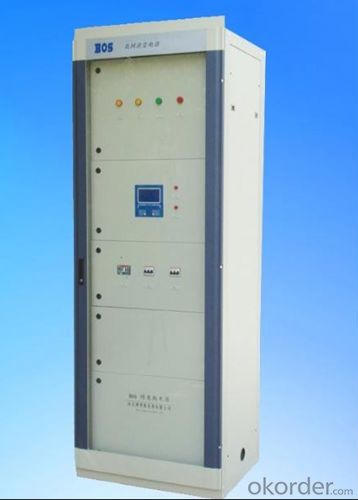
FAQ:Pls introduce more about CNBM .
CNBM Group is short for China National Building Materials Group Corporation, which is established in 1984 with approval from the State Council
CNBM Group is the largest comprehensive building materials industry group in China
The Group has a total asset of over RMB 360 billion, more than 180,000 employees and 17 subsidiaries
- Q: Can a solar controller be used with a solar-powered outdoor advertising system?
- Yes, a solar controller can be used with a solar-powered outdoor advertising system. A solar controller is an important component of a solar power system that regulates the flow of electricity from the solar panels to the advertising system. It helps optimize the charging process, prevent overcharging or discharging of the batteries, and protect the system from damage caused by voltage fluctuations. By using a solar controller, the solar-powered outdoor advertising system can effectively harness and utilize the energy from the solar panels, ensuring reliable and efficient operation.
- Q: How does a solar controller prevent damage to the solar panels from hail or storm events?
- A solar controller does not directly prevent damage to the solar panels from hail or storm events. However, it plays a crucial role in ensuring the safety of the solar panels during such events. One function of a solar controller is to regulate the charging and discharging of the batteries in a solar power system. This means that during a storm event or when hail is falling, the solar controller can detect the changes in voltage and current being generated by the solar panels. If the voltage or current exceeds a certain threshold, indicating a potential risk of damage to the panels, the solar controller can automatically disconnect the panels from the battery system. By disconnecting the panels from the battery system, the solar controller effectively isolates the solar panels from the rest of the system, minimizing the chances of damage occurring. This is important as hail or storm events can create high voltage surges or irregular power fluctuations that could potentially harm the panels or other components of the system. In addition, the solar controller can also provide real-time monitoring of the solar panels' performance and condition. This allows the system owner to keep track of any damage caused by hail or storm events. By being aware of any issues, the system owner can take appropriate action, such as repairing or replacing damaged panels, to ensure the continued efficient operation of the solar power system. Although a solar controller cannot completely prevent damage from hail or storm events, its ability to disconnect the panels from the system and provide monitoring capabilities significantly reduces the risk of damage and helps to protect the investment in solar panels.
- Q: Can a solar controller be used with a solar-powered mining operation?
- Yes, a solar controller can be used with a solar-powered mining operation. A solar controller is an essential component in managing and regulating the flow of power from the solar panels to the mining equipment. It helps optimize the charging and discharging of batteries, protects against overcharging and over-discharging, and ensures the overall efficiency and performance of the solar power system. Therefore, a solar controller is highly recommended and compatible with a solar-powered mining operation.
- Q: Can a solar controller be used with a solar-powered GPS tracker?
- Yes, a solar controller can be used with a solar-powered GPS tracker. A solar controller helps regulate the charging and discharging of the battery by optimizing the power generated from the solar panels. This ensures efficient energy management and extends the battery life of the GPS tracker, making it an ideal companion for solar-powered devices.
- Q: What is the role of a USB charging port in a solar controller?
- The role of a USB charging port in a solar controller is to provide a convenient and versatile way to charge electronic devices using solar power. It allows users to connect their devices directly to the solar controller, harnessing the energy from the solar panels to charge their devices efficiently and sustainably.
- Q: How do I calculate the maximum load output current for a solar controller in a grid-tied system?
- To calculate the maximum load output current for a solar controller in a grid-tied system, you need to consider the specifications provided by the manufacturer. Look for the maximum load capacity or output current rating mentioned in the product datasheet or manual. This value represents the highest current that can be safely drawn from the solar controller's load output. It is crucial to adhere to this limit to prevent any damage to the controller or the connected devices.
- Q: Can a solar controller be used with both off-grid and grid-tied systems?
- No, a solar controller cannot be used with both off-grid and grid-tied systems. Off-grid systems require a solar controller to regulate the charging and discharging of batteries, whereas grid-tied systems do not require batteries and therefore do not require a solar controller.
- Q: Can a solar controller be used in a solar-powered swimming pool system?
- Yes, a solar controller can be used in a solar-powered swimming pool system. A solar controller is responsible for regulating the flow of electricity from solar panels to the pool's pump and other electrical components. It helps in optimizing the efficiency of the pool system by ensuring adequate power supply, monitoring battery levels, and protecting the system from overcharging or overheating.
- Q: Are there any safety concerns with using a solar controller?
- Yes, there can be safety concerns with using a solar controller. These concerns mainly revolve around electrical safety, such as the risk of electrical shock or fire if the controller is not installed, wired, or maintained properly. It is important to follow all the manufacturer's instructions and guidelines and ensure that the controller is installed and used in compliance with relevant electrical codes and regulations. Regular inspections and maintenance are also recommended to mitigate any potential safety risks.
- Q: Can a solar controller be used with AC-coupled solar systems?
- No, a solar controller cannot be used with AC-coupled solar systems. AC-coupled solar systems utilize an inverter-based energy storage solution, which does not require a solar controller. The inverter is responsible for managing the flow of energy between the solar panels, batteries, and the grid, eliminating the need for a separate controller.
Send your message to us
Solar Irrigation Controllers PV Off-Grid Inverter from China GN-3KDSL-22R
OKorder Service Pledge
OKorder Financial Service
Similar products
Hot products
Hot Searches
Related keywords


